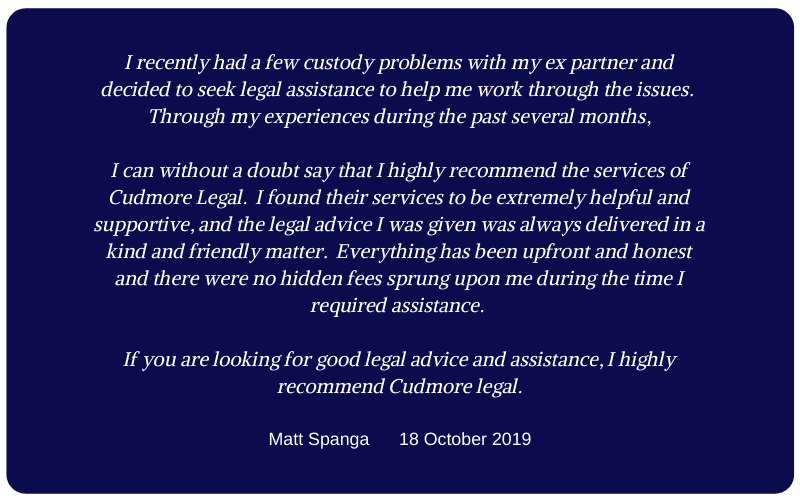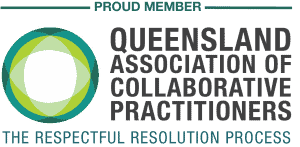How to get your child returned
If a parent has taken a child/ren without permission and won’t return the child/ren, you do have several legal and non-legal options. Non-legal options include:
- Talking to the other parent; or
- Having a friend or relative talk to the other parent
Legal options include:
- Hiring a child custody lawyer to communicate with the other parent; or
- Making an application to the court for Child Recovery Order
In this article, we will explore in detail what your options are when a parent takes your child/ren without your permission, child recovery orders, and location orders.

Table of contents
Making a child recovery order
- What is a child recovery order?
- When will the court make a child recovery order?
- What is the process for a child recovery order?
- Who can make a child recovery order?
- Applying for a recovery order without a parenting order
- When can you make a child recovery order?
- How do you make a recovery order?
- Where are child recovery orders valid?
- How long does it take for a court to process a recovery order?
- What if I don’t know where the child/ren are?
Responding to a child recovery order
When should you try to talk to the other parent that took the child without your permission?
If you can find the other parent and there is not a domestic violence order in place preventing contact, then you should almost always try to talk to the other parent.
What if I can’t talk to the other parent?
If you can’t talk to the other parent then you can get friends or relatives to try to communicate with the other parent to see what is happening with the child/ren. Alternatively, if you do not want to involve anyone else you can hire a child custody lawyer to try to communicate with the other parent.
What if the other parent won’t return the children even after I have talked to them or what if I can’t find the other parent?
If you can’t speak to the parent, then your next option is to apply to the court for a Child Recovery Order. If you can’t find the other parent then you can also make an application for a location or search order. This order will allow police and other departments to intervene, provide information to you and return the children to you.
What is a child recovery order?
A child recovery order is an order made by the family court to order a person to return the child/ren. to another person. It may also include orders and authorities for state and federal departments to recover and return child/ren, as well as the authority to arrest without warrant any person who again removes or takes the child/ren.
What if the other parent takes them overseas?
In some cases, you will be concerned that the other parent may be taking the children overseas.
If you are worried that the children might be taken out of Australia you should apply to the Court to place the children on the Watch List. You do not need to wait for the court order you can place a child’s name on the Airport Watch List immediately after you have the application at the court. You will have to send the application to Federal Police with copies of the order to make sure your child/ren get on the watchlist immediately. See more at Airport Watchlist.
When will a court make a child recovery order?
The court will only make a recovery order if it is in the child’s best interests. The child’s best interests are defined by the family law act to be a meaningful relationship with both parents and to be protected from harm, abuse and neglect. Consequently, in child recovery matters a family court judge will typically pay close attention to the interests of a child and the psychological harm which results from alienation.
What is the process for a child recovery order?
A child recovery order is made by application to the Federal Circuit Court. If you have an existing parenting matter in the Federal Circuit Court, you can file the application as a part of your current matter. Otherwise, you should file your application for a child recovery order with an application for parenting orders.
If the matter is urgent, you can include a letter to the registrar to ask for an urgent appearance before the court.
In addition to the application, you should file an affidavit to support the child recovery order which includes:
- A brief history of the relationship between you and the person the child is presumed to be with;
- A list of previous court hearings and family law orders;
- Details about the child and where he/she usually lives;
- How and when the child was taken from you or not delivered to you;
- Where the child might be and the basis for that belief;
- Steps (if any) that have been taken to find the child;
- Why it is in the child’s best interests to be returned to you;
- The likely impact on the child if a recovery order is not made; and
- Any other factors are relevant to the case.
Once filed, the court will officiate these documents with the court seal and provide you with a date to present to the Federal Circuit Court. If you are reasonably able to contact the other party, you must serve the sealed documents to the other party. On the court date, you will present your matter to a judge who will decide whether to make a child recovery order in your favour. If you are also applying for a parenting order, the judge may make interim parenting orders.
Who can make a child recovery order?
You can apply for a recovery order if you are a person:
- who the child lives with spends time with or communicates with as stated in a parenting order;
- who has parental responsibility for the child in a parenting order;
- grandparent of the child; or
- concerned with the care, welfare and development of the child. For example, you may be the person who the child lives or spends time with but there is no parenting order that states this.
Applying for a recovery order without a parenting order
You can still apply to the court for a recovery order if you do not have parenting orders in place. However, when applying for the recovery order you should also apply for orders to help prevent the other parent taking the child again. Parenting order address who is responsible for making decisions regarding the children and where they will live and who they will spend time with
Anyone concerned with the care, welfare and development of the child or children can apply for a child recovery order, without recourse to any previous parenting orders.
When can you make a recovery order?
There is no minimum period of time to wait before applying for a recovery order. However, in practice, you should ensure that a recovery order is appropriate before filing. Unless there is a clear sense of urgency, it is best practice to confirm there has been a deliberate attempt to withhold the child/ren, rather than a genuine misunderstanding, accident or emergency.
How do you make a recovery order?
A recovery order is made by application to the Federal Circuit Court. You must include an affidavit to support your application, and you may include a letter to the court registrar to ask for an urgent appearance before the court. The court will officiate these documents and provide you with a court date. The judge will hear your matter on that date and decide whether to make a child recovery order.
Where are child recovery orders valid?
Federal child recovery orders are valid throughout the Australian federal jurisdictions. This includes all Australian land, sea and airspace. Outside of Australia, a federal order will not be valid. If the child is outside of Australia in a country that is a party to the Convention on the Civil Aspects of International Child Abduction (“the Hague Convention”) you must apply to the Australian Central Authority to seek recovery of the child. If the child is a non-Hague Convention Country, you must seek legal advice from that country.
How long does it take for a court to process a recovery order?
Child recovery orders are typically made with a letter of urgency to the court registrar to fast-track the court date. Depending on the degree of urgency the matter can be heard within the week to almost instantly for the most serious matters. Once granted, they take immediate effect.
What if I don’t know where the child/ren are?
Provided you don’t have any orders preventing you from contacting the other parent or children, Firstly try to get friends or relatives to help you find them and look at social media too.
If you still can’t find them, other orders are available which may be made in addition to a recovery order such as a:
- Location order – which requires a specific person to give the Court information about the child’s location.
- Commonwealth Information order – which requires an Australian Government Department, such as Centrelink or public schools, to provide the court with information about the child’s location.
- Publication order – which permits the media to publish details and photographs of the missing child and the person they are believed to be with, and details of where the child was last seen.
How to respond to a recovery order?
There is no special way to respond to a recovery order. Parties respond to recovery orders in the same way they would any other family law application by filing a response with the Federal Circuit Court with an affidavit indicating their position, and any cross-application. The party against whom a recovery order is made will typically seek legal advice and communicate with the other party before appearing at the Federal Circuit Court to have their matter heard.
How long do you have to respond to a recovery order?
A response can be made to a recovery order any time before the matter is heard before the Federal Circuit Court. However, in matters of exceptional urgency, the court may hear the matter on an ‘ex parte’ basis, meaning that the court will hear the matter without a response from the other side.
How to fight a recovery order?
To fight a recovery order you must negate the application for a recovery order. To do so you must file with the Federal Circuit Court a response to the application for a recovery order, communicate and negotiate with the other party, and if necessary, have the matter heard in court
What if the child doesn’t want to return the other parent?
If the child genuinely doesn’t want to return to the other parent, this could be put to the judge. See more at When Can a Child Choose Which Parent They Want to Live With. If you have orders in place, the fact a child doesn’t want to return might also be a factor see Breach of Family Law Orders.
Child Custody Lawyer Initial Consult







